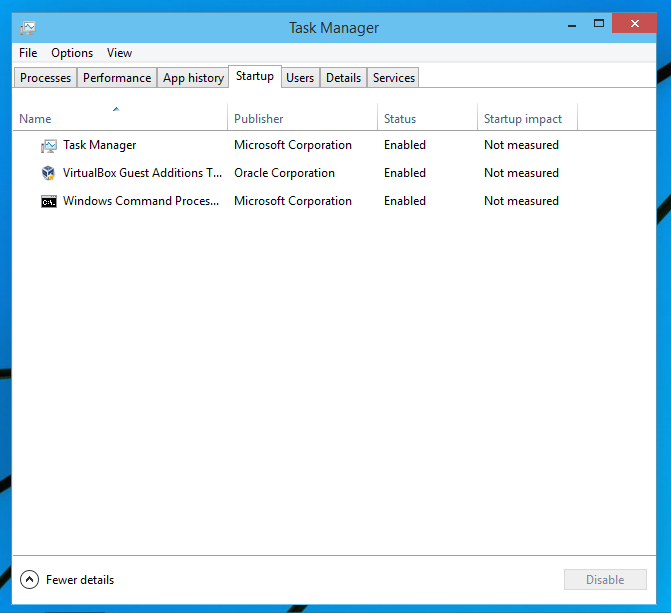How To Stop Skype From Starting Automatically Windows
Our tool will quickly repair common computer errors, protect you from file or data loss, malware, trojans, hardware failure and optimize your PC to boost for maximum performance. Fix PC issues now using 3 easy steps:. rated as 'Excellent' on TrustPilot.com. Click on Start Scan button to find errors related to Windows. Click Repair All to fix all issues with Patented Technologies.6 Ways to Stop Skype from Starting AutomaticallyThis article deals with techniques you can employ to stop Skype from starting automatically in Windows 10. Our tool will quickly repair common computer errors, protect you from file or data loss, malware, trojans, hardware failure and optimize your PC to boost for maximum performance. Fix PC issues now using 3 easy steps:.

rated as 'Excellent' on TrustPilot.com. Click on Start Scan button to find errors related to Windows. Click Repair All to fix all issues with Patented Technologies.Method 1: Stop Skype Desktop app from starting automatically in Windows 101. At First, open the Skype desktop app on your computer. Then click on Skype shortcut on your desktop. Afterward, click on Skype from the list of applications. Search for skype2.

In case you are not already signed in, sign in to your Skype account. Skype sign in3. Then click on Tools present in the top menu bar.4. Then click on Options. It will be shown in the drop-down menu.5. In the Options screen, there will be an option Start Skype when I start Windows. Afterwards, click on Save.3.
Then find Messaging + Skype. Finally, click on it and then select Uninstall.Remove Skype using the Powershell by following the steps:1. At First, press the Windows and S keys together. Then type in the Search box that is provided. Afterwards right click and select Run as Administrator.
Then press Ctrl + Shift + Enter simultaneously. Confirm the User Account Control Prompt.3. Afterwards type in the following commands:Get-AppxPackage.messaging. Remove-AppxPackageGet-AppxPackage.skypeapp. Remove-AppxPackage Get-AppxPackage.messaging. Remove-AppxPackageThen press Enter after each command you type.See Also: –These are all the methods you can use to stop Skype from starting automatically in Windows 10.
Apps you install on can sometimes configure themselves to run automatically on startup, and they can also configure background services that start every time you boot your computer. While they can come in handy, over time, the list of apps and services running on startup can grow, which can slow your boot time, affect battery life, and impact overall system performance.Usually, applications include the necessary settings to block them from starting alongside Windows 10, but it's a lot easier to use Task Manager to do so.In this, we walk you through the steps to identify applications that are causing your device to boot slow, consuming system resources unnecessarily, and the steps to improve system performance. How to manage apps that launch at startup using Task ManagerFirst, you should open Task Manager. If Task Manager launches in compact mode, click the More details button in the bottom-right corner to get to the advanced options, and then click the Startup tab.Quick Tip: There are a number of ways to launch the Task Manager, but you can simply right-click the Taskbar and select Task Manager. Alternatively, you can right-click the Start button and select Task Manager, or it's also possible to use the Ctrl + Shift + Esc keyboard shortcut. Or just start typing it in your taskbar search field.
Identifying problematic applicationsIf you have a long list, it's a good idea to click the Status column to sort the items into Enabled and Disabled to make the list more manageable.To help you determine which apps you should disable, Task Manager displays an impact measurement for each app. Here's exactly how Windows 10 determines each value:. High — The app utilizes more than 1,000ms of processor time, or it uses more than 3MB of disk I/O. Medium — The app uses 300ms to 1,000ms of processor time, or 300KB to 3MB of disk I/O. Low — The app uses less than 300ms of processor time and less than 300KB of disk I/O.
How To Keep Skype From Starting Automatically Windows 7
Not measured — This usually means that the app was recently installed and Windows 10 hasn't calculated its impact. It could also happen that when an app has been uninstalled, but the entry still shows up in Task Manager.While you can control anything listed in the Startup tab, it's also important to understand what you're trying to disable, because sometimes you could block an app or service that is required to run the OS or application correctly.You can find out more information about an app by right-clicking the item and clicking Search online. This will perform an online search in your web browser with the name of the app and exact file name. For example, if I was trying to learn more about 'Microsoft OneDrive,' the online search query would include 'OneDrive.exe Microsoft OneDrive.' Wrapping upAfter completing the steps, depending on the items you disabled, you should notice an improvement in the overall performance of Windows 10.
However, you must restart your computer for the changes to take effect, because these steps won't close an application that is currently running.It should be noted that you can only control traditional desktop (win32) apps on startup. On Windows 10, apps you download from the Windows Store (excluding converted apps) are not allowed to run automatically on startup.While this guide focuses on Windows 10, you can use the same instructions to manage applications on Windows 8.x.
More Windows 10 resourcesFor more helpful articles, coverage, and answers to common questions about Windows 10, visit the following resources:.